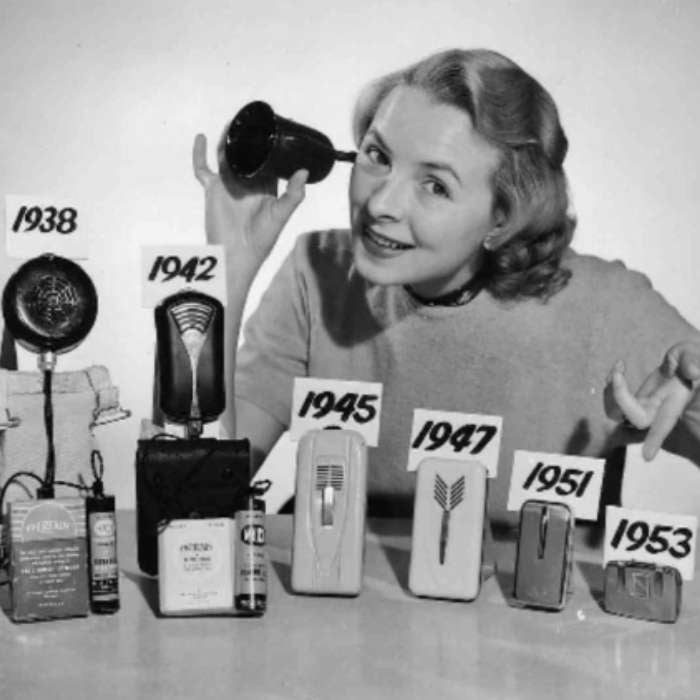Key Takeaways:
- The first known hearing aid start4ed in the 17th century, known as the ear trumpet.
- Next came electric hearing aids, with Siemens as one of the first companies to make this technology around the dawn of the 20th century.
- Hearing aids continued to evolve into vacuum tube hearing aids, devices worn in the pocket, transistors, and body-worn devices.
- In the early 1980s, digital hearing aids hit the market, paving the way for the development of today's smaller, more advanced hearing aids.

Hearing loss has been around as long as mankind but it wasn’t until a few hundred years ago that people began to experiment with treatment. Buckle up, we’re going to take a look at the history of hearing aids from acoustic thrones all the way to artificial intelligence.
The first hearing aid, called the ear trumpet, was created in the 17th century.
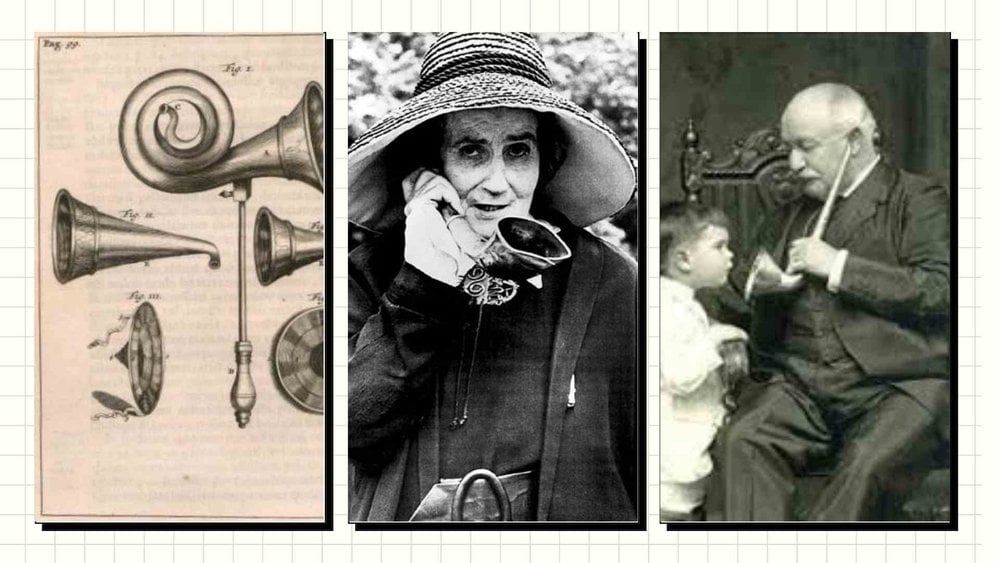
Ear trumpets became increasingly common between the 17th and 18th centuries. In 1800 a London man named Frederick C. Rein created the first commercially available line of ear trumpets.
Later, Rein was commissioned to create a custom acoustic throne for King John VI of Portugal. His subjects would shout into the holes in the armrests.
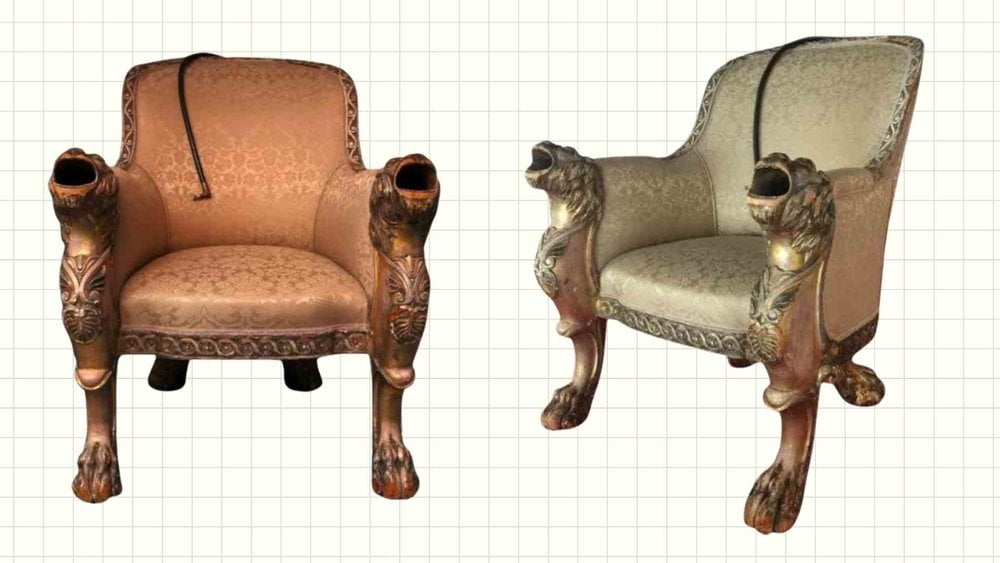
In the 1870s, Alexander Graham Bell's invention of the telephone jumpstarted a new era in hearing aid devices.
Bell's new phones could control the loudness, frequency, and distortion of sounds. This new technology was used to create the first electric hearing aid, called the Akouphone, in 1898.
Siemens was one of the first manufacturers of an electric hearing aid, and their hearing aids were notoriously bulky and not easily portable. Eventually, the electric hearing aid was small enough to fit in a purse or briefcase.
In the early 1920s, Navel engineer Earl Hanson patented the first vacuum tube hearing aid.
The innovation allowed hearing aids to get significantly smaller through the 1920s and 1930s. The industry-leading vacuum tube hearing aid created by Hanson initially weighed 7 pounds.
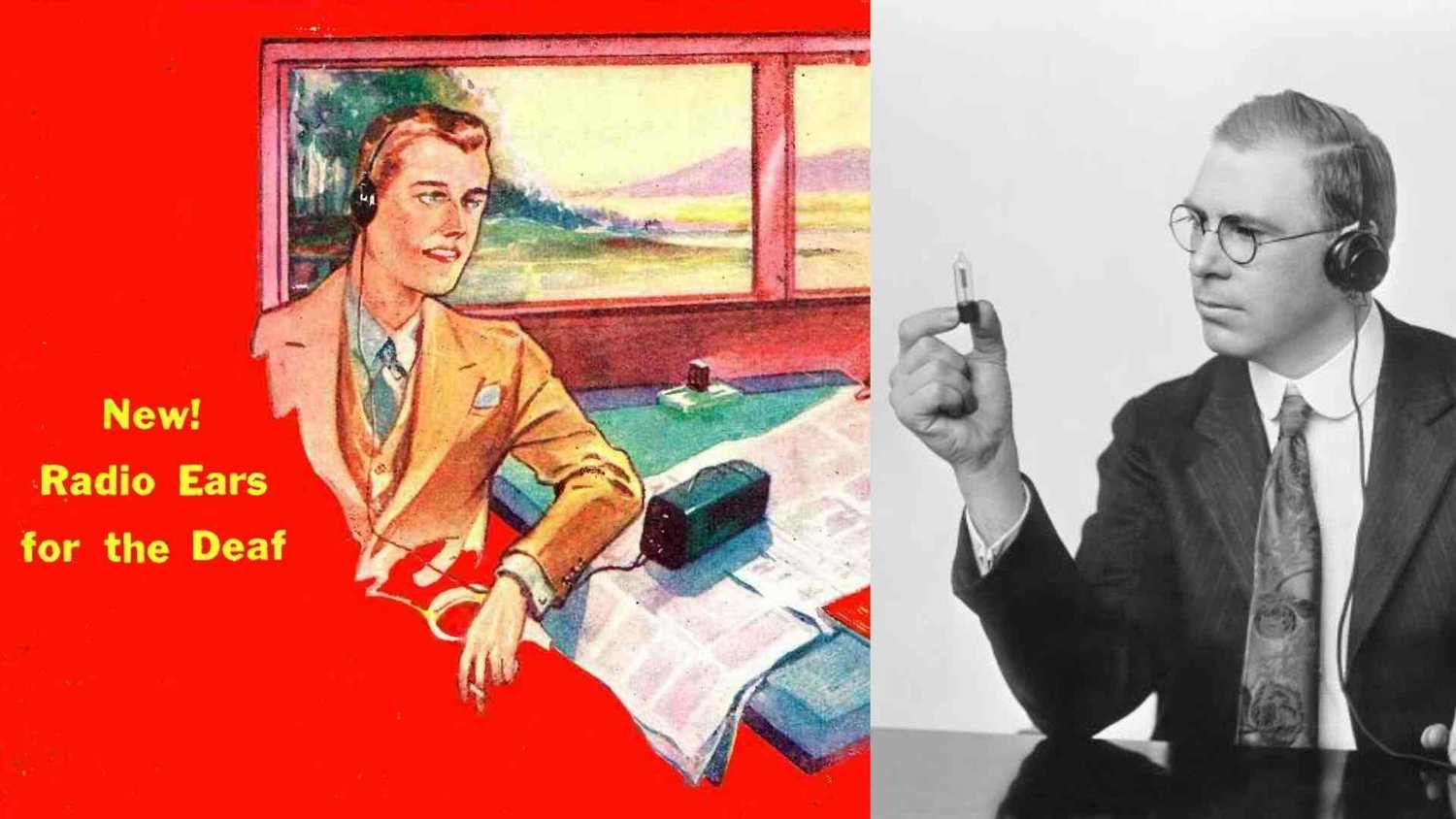
The first hearing aid with gain control arrived at the height of World War II, in 1935.
This hearing aid was the first device that allowed the sound output to be altered based on a patient's needs.
Military technological advances in World War II helped the development of hearing aids get smaller through miniaturization techniques. This evolution is evident in Zenith's pocket-sized Miniature. Can we bring back this rocker aesthetic?
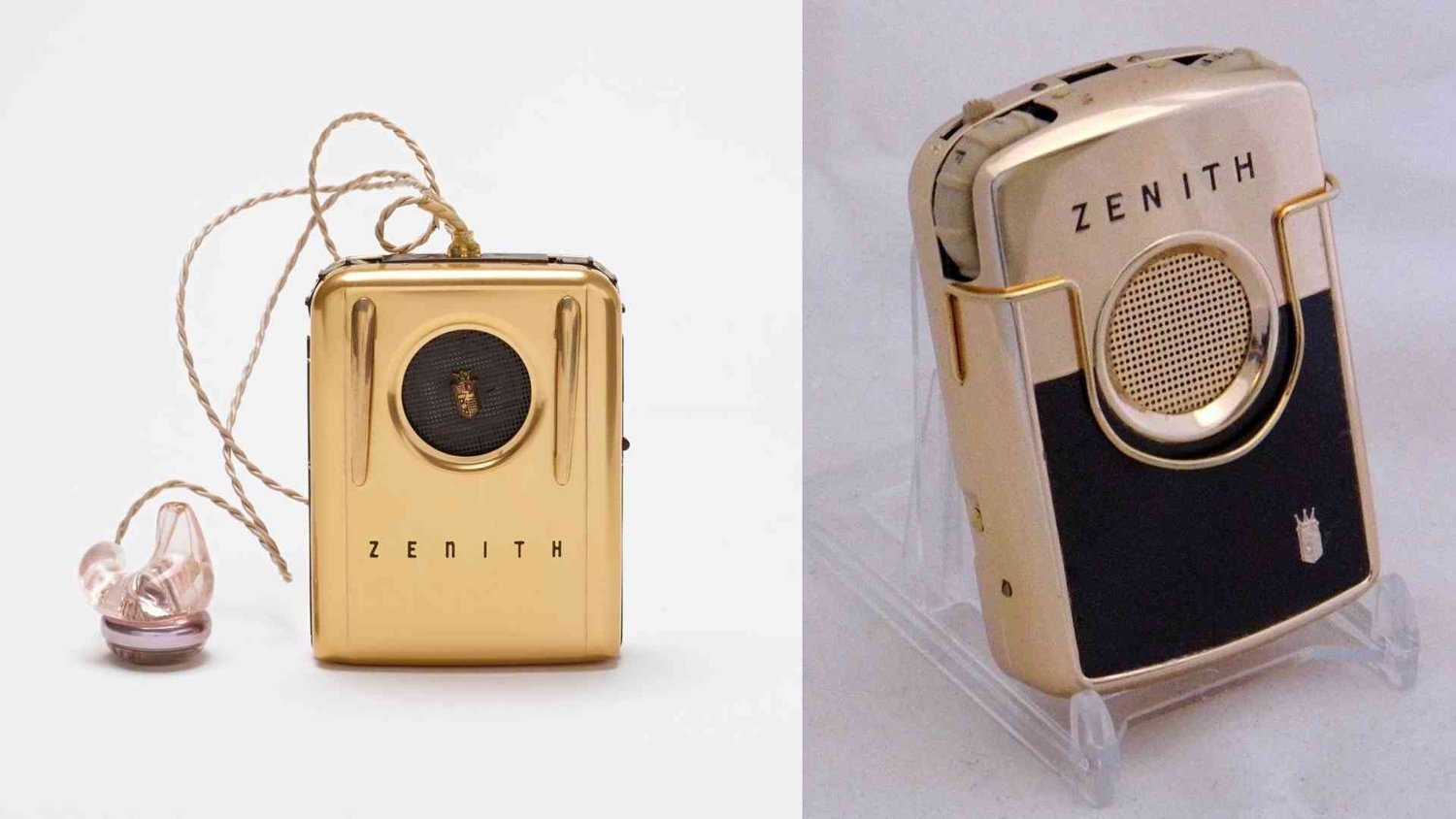
In 1948 Bell Labs played another pivotal role in developing hearing aids with the invention of the transistor.
Transistors replaced vacuum tubes; they were small, required less battery power, and had less sound distortion.
Four years later, Sonotone used the transistor to create the Sonotone 1010. The Sonotone 1010 was a hybrid hearing aid as it used two vacuum tubes and a single transistor as the output stage.
The integrated circuit eventually replaced the transistor from Texas Instruments in the late 1950s.
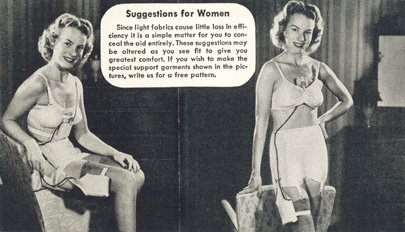
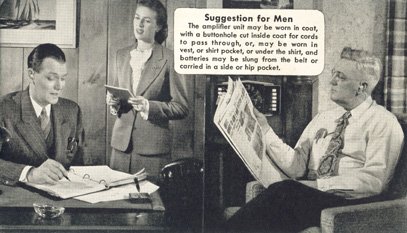
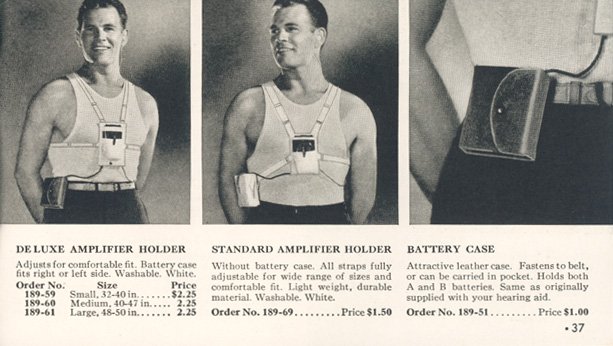
The next big leap in hearing tech came from Bell Labs in 1960.
The company created digital processing for creating both speech and audio signals. Digital hearing aids wouldn't go mainstream for another 35 years, but the innovation set the stage for the devices we wear today.
In the 1970s, the microprocessor was created and opened the door to the miniaturization of digital hearing aids. Around the same time, researcher Edgar Villchur developed a device that enabled an audio signal to be separated into frequency bands.
These frequency bands could adjust the sound non-linearly so that loud sounds could be less amplified and weak sounds could become more amplified. The system of multi-channel amplitude compression became the design framework for the first hearing aids that used digital technology.
In 1982 the Civil University of New York created a rough, experimental prototype of a fully digital hearing aid.
The design never made it out of the lab, but it signaled that fully digital devices that converted sound in real-time were possible.
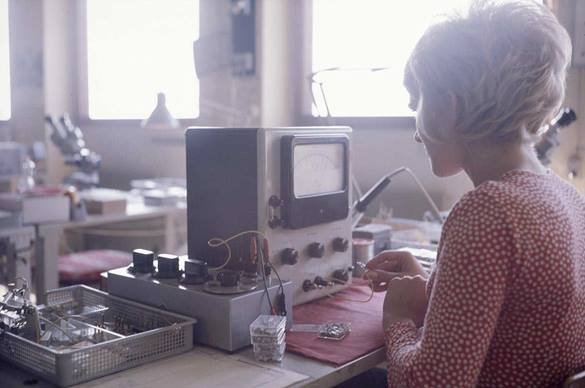
Around the same time, Engebretson, Morley, and Popelka patented a miniaturized version of the digital hearing aids that used a lot of the tech we know today, including directional microphones and a fitting algorithm.
In 1987 the Nicolet corporation created the first commercial, fully digital hearing aid called the Nicolet Pheonix.
The project was before its time, and Nicolet soon went out of business, but their creation was a look into the future.
Oticon developed the next fully digital hearing aid in 1995. The Oticon product had limited distribution, but Widex followed quickly with their digital hearing aid, Senso.
The Widex Senso model finally achieved mainstream adoption in 1996.
Nearly 40 years after Bell Labs created digital processing for speech, the age of digital hearing aids had arrived. Within ten years, 90% of hearing aids were digital.
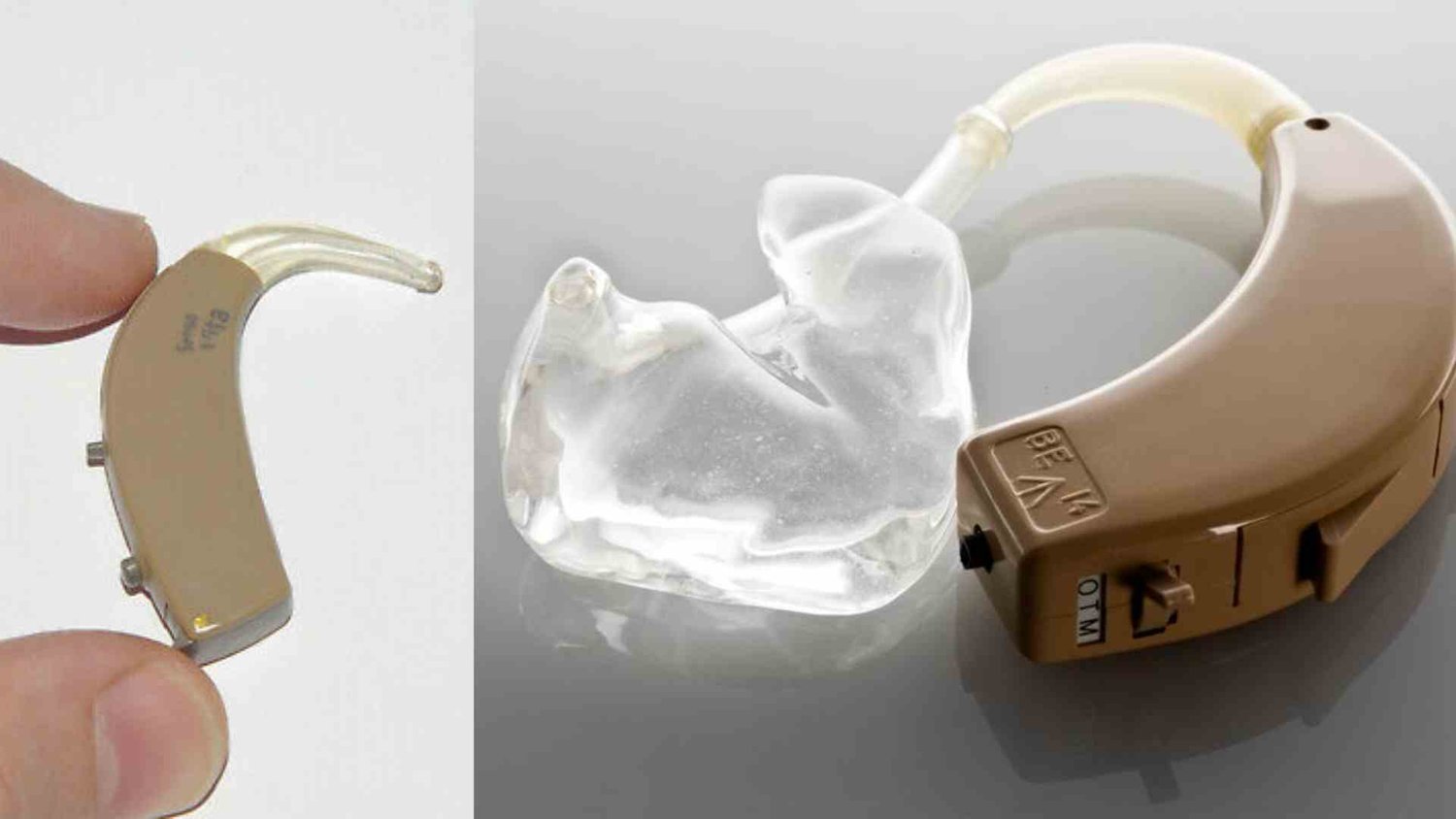
Throughout the early 2000s, hearing aids became smaller and added significant new features.
In 2006 Oticon released a hearing aid with the receiver (speaker) directly in the ear.
Also, in 2006 Starkey introduced the ELI hearing aid, which enabled Bluetooth connection for the first time. The move signaled a shift towards hearing aids as intelligent devices.
In 2013 ReSound introduced a hearing aid with iPhone compatibility.
Hearing aid wearers started swiping and tapping their screens to control their devices. The iPhone-compatible hearing aids could also enabled wearers to stream calls and music directly from their devices. In 2022 virtually all premium hearing aids are Bluetooth enabled.
Today's hearing aids are fully connected smart devices that leverage AI, health tracking, and even real-time translation. If history is any indication, they'll keep getting better.
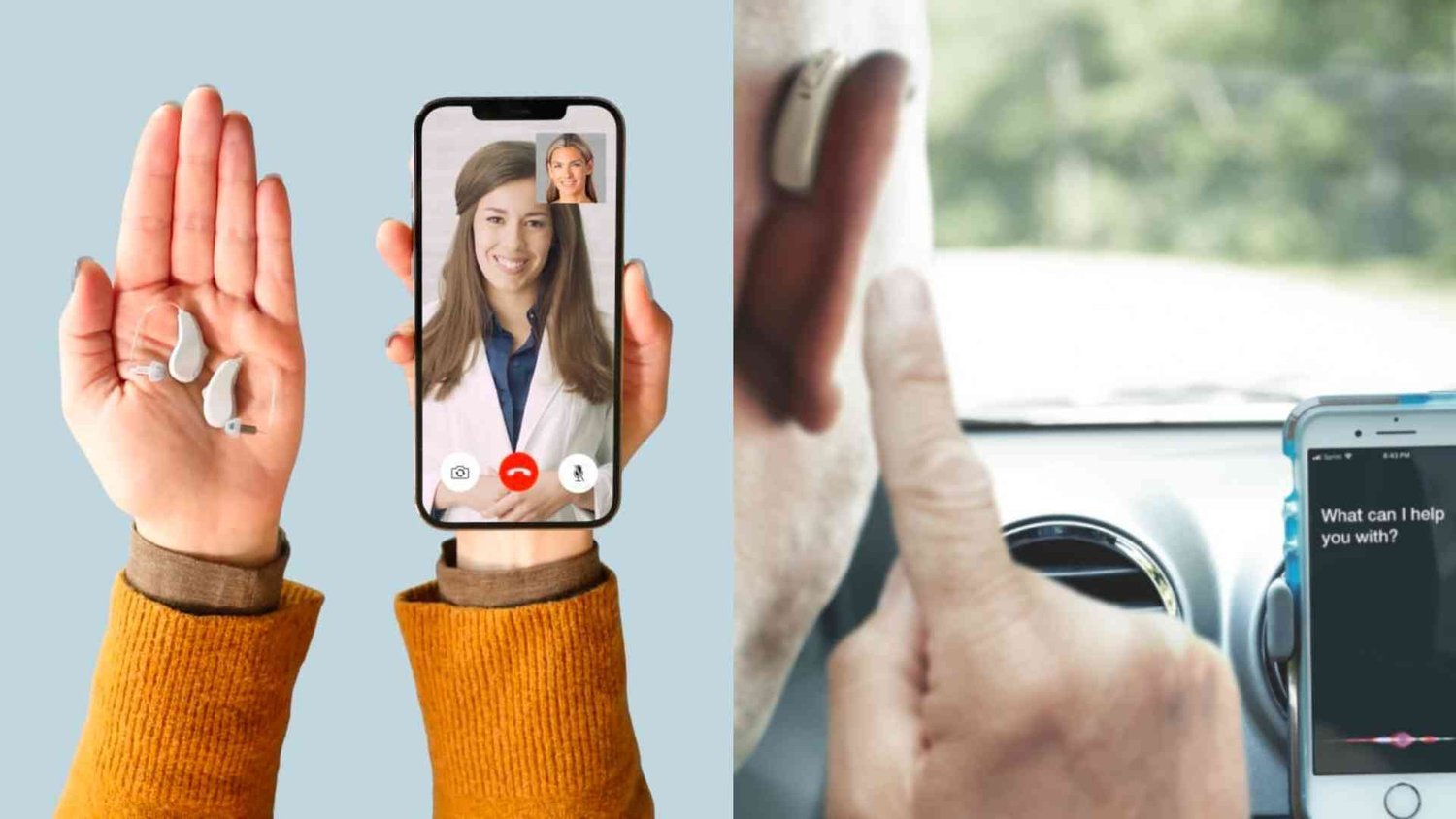
If you want to go deeper into the history of hearing aids, I’d suggest you look at The Hearing Aid Museum, Wikipedia, and this great guide from the Washington University School of Medicine.

